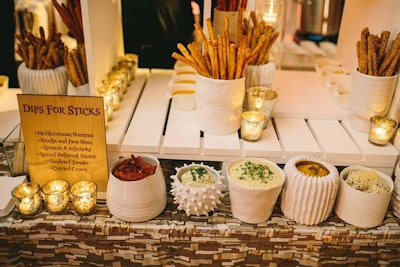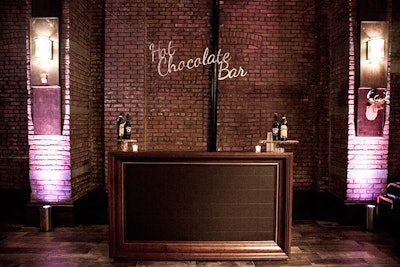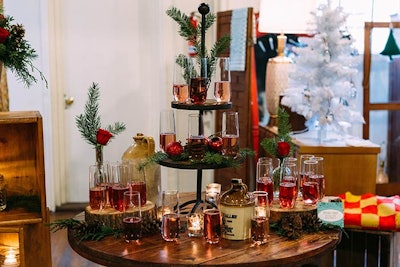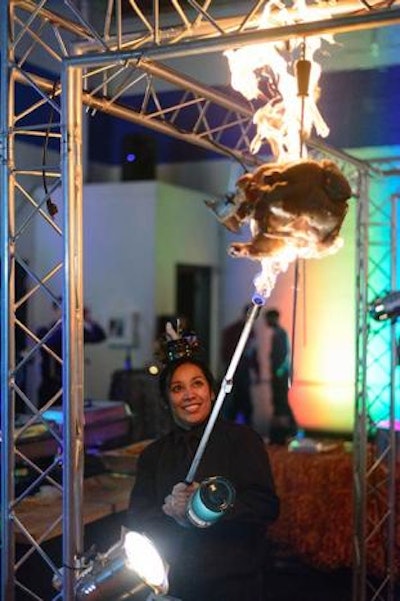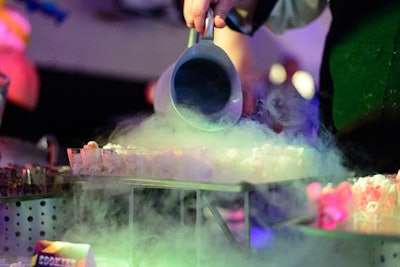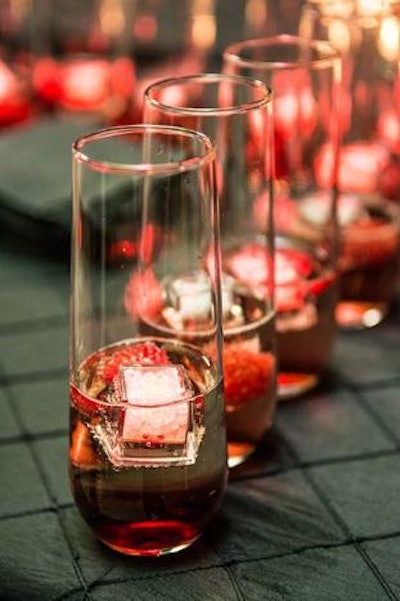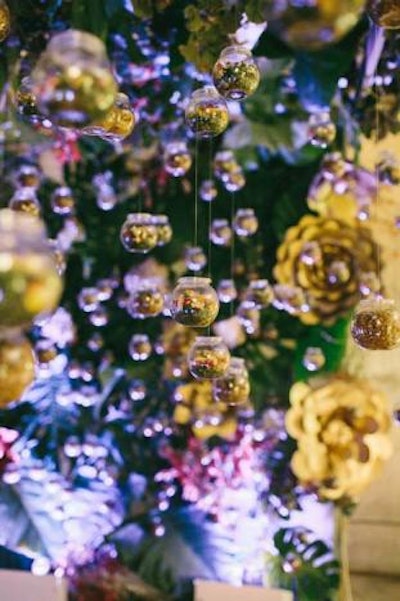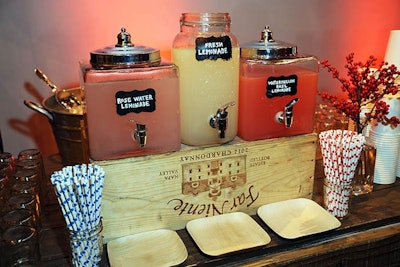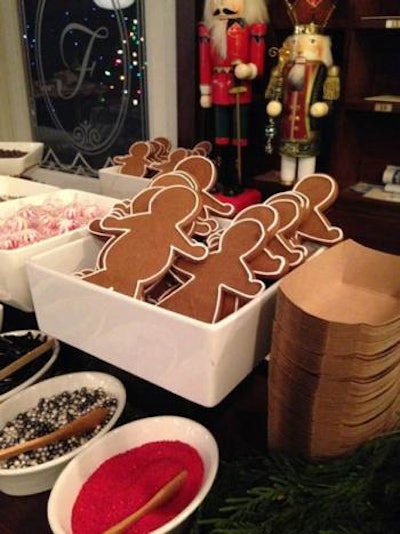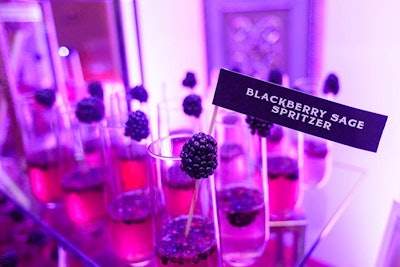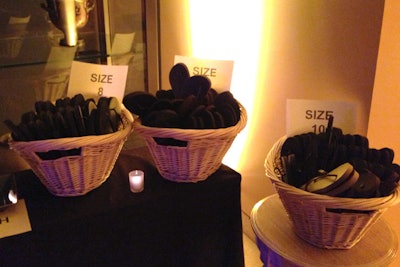
MSNBC also had a flip-flop station at its White House Correspondents' Association Dinner after-party, providing relief for folks who had been on their feet all evening.
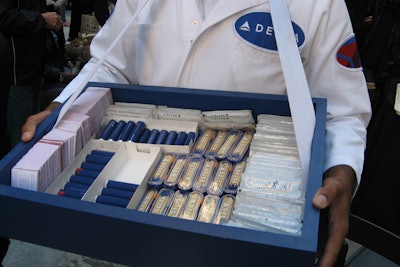
Things tend to get messy at food festivals, tastings, and other events with lots of grub, so Delta provided toothpicks, hand wipes, and mints at the 2010 New York City Wine & Food Festival, a smart way to get the brand in front of attendees.
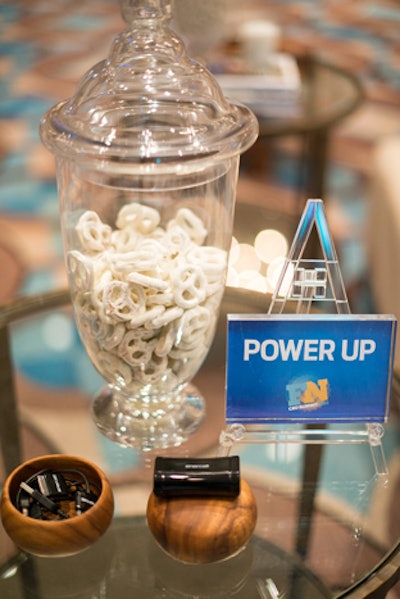
At the FN C.E.O. Summit in Miami, guests could charge their smartphones in a luxe lounge—a stylish, discreet solution to manage the task that everyone wants as a convenience at events. The centerpieces during the education sessions were framed instructions on how to reference the summit on social media and log on to the hotel's Wi-Fi network.
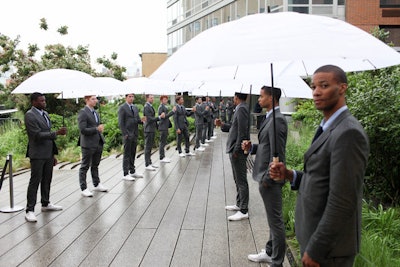
Guests arriving at USA Network's event atop the High Line in New York last summer found a receiving line of umbrella-wielding staffers, who provided shelter all the way to the entrance of the covered bash.
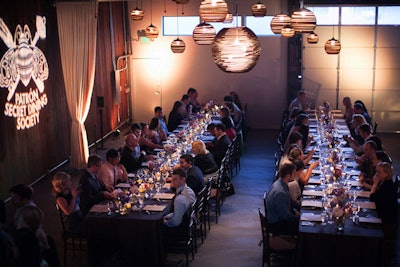
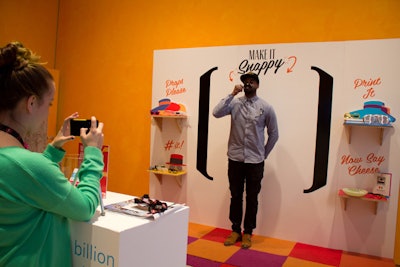
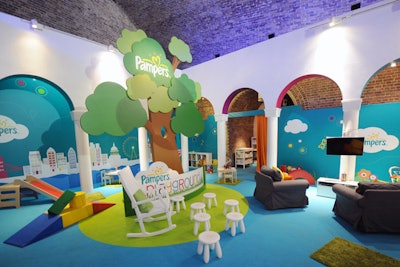
Content creation, in the form of photos, videos, or other material culled from live events and meant for sharing on YouTube, social media, or elsewhere, has been increasingly important to sponsors. All parties involved are now asking far more evolved questions about not just how to create it, but how to create truly great material that people will actually want to watch.
“There’s so much out there, so the [goal] becomes how to curate what is good versus bad. What are sponsors going to be able to actually use and gain traction on?” says Alan Miller, co-publisher of Filter and co-owner of Filter Creative Group. “A car company or a fashion advertiser might want to sponsor [our event], so they’ll expect a sizzle reel will go up on our site and millions of people will want to watch, but that doesn’t automatically happen. It needs to be compelling.”
Talk about a compelling idea that got wide traction: Procter & Gamble took to the London Olympics for a mom-focused campaign with an activation in the form of a 65,000-square-foot “home away from home” for the mothers of competing athletes (pictured). Its related global “Thank You, Mom” campaign celebrated mothers of athletes through ads run online, in print, on TV, and through social media. And a short film called Best Job was released on YouTube 100 days before the official start of the games, as was a “Thank You, Mom” app, which let consumers thank their moms by uploading videos, photos, or text-based messages to a dedicated Facebook page.

It’s not new that sponsors want to align with nonprofits, but the importance of pairing up with great causes is more important than ever for brands, especially in light of recent, widely witnessed tragedies like the damage wrought by Hurricane Sandy. Brands are seeking out nonprofits that fit with their visions for corporate responsibility and developing partnerships that go well beyond the hours of the live event.
Jennifer Howell, founder of arts nonprofit Art of Elysium, says sponsors have been reaching out to her group “all the time” versus the more traditional other-way-around route of event hosts courting sponsors. She indicates that she’s seeing charities trying to accomplish their marketing and philanthropic goals in one fell swoop by blurring the line between those previously separate budgets.
She described a recent partnership in which beauty product delivery company Birchbox sponsored a couple of the charity’s events, setting up a bar (pictured) where people could come and fill their own boxes with products of their choice. Some of the charity’s supporters built their boxes, took photos, and gave quotes that were used for an online promotion that focused on the charity’s work as well as the holiday product collection.
Birchbox then put the organization’s logo and mission on its boxes, which were distributed to all of its shoppers in November, as part of a holiday giving campaign. “This helps us greatly to reach a new audience with our mission,” Howell says, while also acknowledging the benefit to Birchbox’s bottom line at a time when its consumers are eager for feel-good stories.
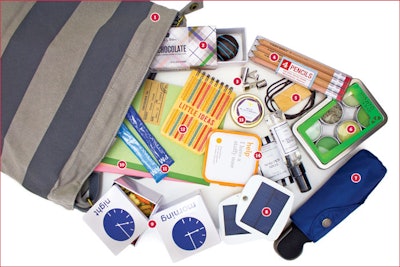
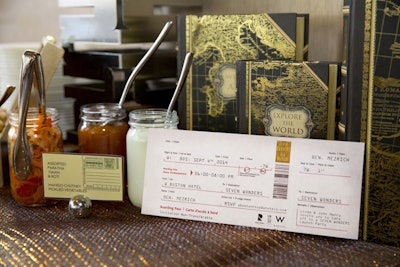
To celebrate the release of author Ben Mezrich's book Seven Wonders, the W Boston Hotel hosted a book party on September 4. Reflecting the book's international theme, food displays were decked with atlases, and international postcards served as food signage. Snacks included assorted naans, Middle Eastern breads and dips, handmade dumplings, and Greek cheeses.
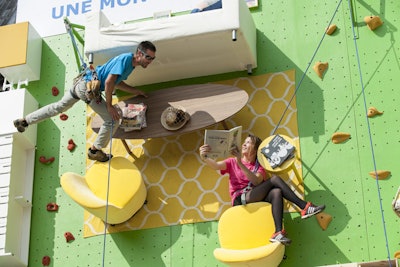
To celebrate the opening of its store in Clermont-Ferrand, France, Ikea teamed up with Parisian event agency Ubi Bene to create a vertical apartment that also functioned as a rock-climbing wall from September 10 to 14. Ikea furniture decorated the wall and served as handy rest stops for those climbing the structure.
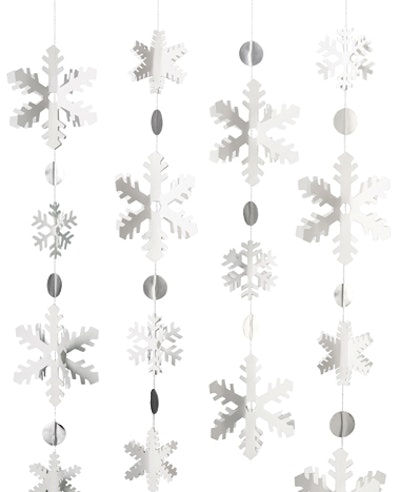
Planning an office holiday party? Get crafty with the 3-D snowflake kit, $13.95, from Paper Source to create a cubicle of flurries. The kit makes four garland strands.
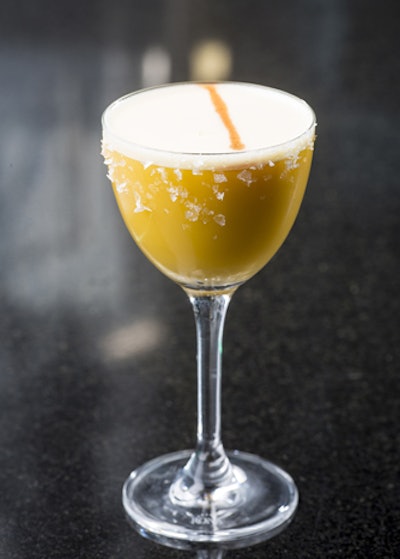
Suited to fall holiday celebrations, Fulton Market Kitchen in Chicago has a "Trust Fall" cocktail. Made with Remy Martin VSOP, burnt-sugar syrup, Tempus Fugit, crème de cacao, egg white, and sea salt, the drink tastes like salted caramel.
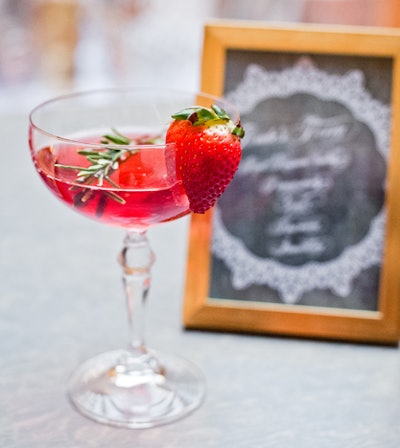
Chicago event firm A Perfect Event serves bright red "Holly Jolly" cocktails at holiday gatherings. The fruity drink combines Real Russian vodka with ginger beer and strawberry jam; it's garnished with fresh rosemary and strawberry.
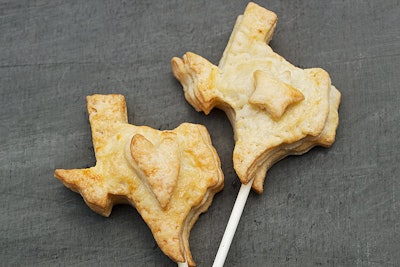
In Austin, the locally sourced goods at Tiny Pies come in a variety of sizes, including the individually wrapped titular three-inch pies, Mason jar pies, and customizable pie pops in either blueberry or cherry, available in the shape of Texas.
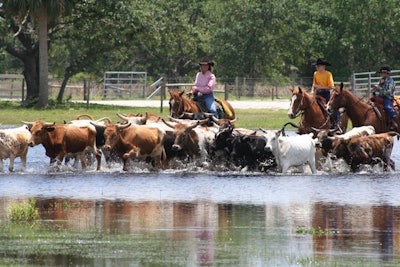
Turn guests into cowboys for a day by experiencing Westgate River Ranch’s new cattle drive teambuilding adventure. The excursion begins with breakfast at the ranch at sunrise, followed by a scenic guided horseback ride to gather the herd and drive it across the open land into cow pens. The activity ends with outdoor country-style lunch and lessons in whip-cracking and rope-throwing. In addition to cattle drives, more than a dozen cowboy-theme teambuilding activities are available, including a blindfolded saddle assembly competition and an outdoor adventure course.
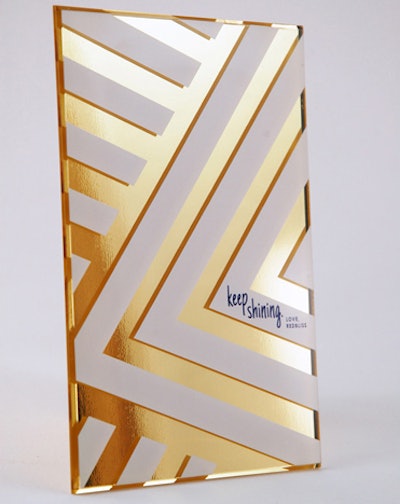
Looking for holiday cards? Shine bright in 2015 with the glam beveled acrylic greeting, featuring a gold leaf chevron pattern, from RedBliss Design. Pricing available upon request.
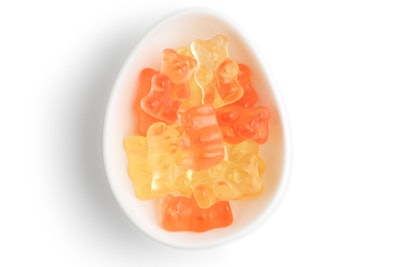
Candy boutique Sugarfina opened a second location at the Americana at Brand in Los Angeles this summer. The confections make for colorful gifts in cocktail-inspired varieties such as champagne gummy bears, spiced rum and Coke gummies, and peach Bellini gummies—all top sellers. The boutique‘s gifts come in its signature turquoise bento boxes, which can be customized with 140 candy varieties from around the world.
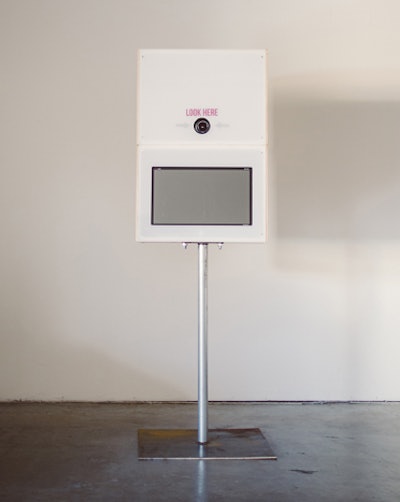
Los Angeles-based open-air photo booth Flipbooth creates mini books of photos, similar to old-school animation flipbooks. Guests record a six-second video, and then Flipbooth staffers produce a tiny photo album to replay the action. Backdrops, book covers, and props can be customized to match the event’s theme and decor. Pricing starts at $995.

Regardless of global economic trends, affluent consumers continue to spend money on luxury experiences, and new offerings are popping up. In May, Etihad Airways, the national airline of the United Arab Emirates, announced plans for the world’s first private multiroom cabin on a commercial passenger aircraft. In April, the Four Seasons unveiled the hotel industry’s first fully branded private jet (pictured), to be used for private tours that include stays at its properties. The new service IfOnly sells exclusive experiences associated with celebrities, like a $116,000 weekend tennis getaway with Andre Agassi and Steffi Graf.
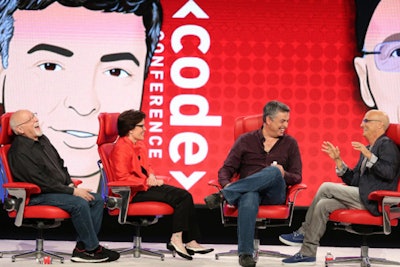
As more journalists take on event programming roles, they’re launching ambitious projects and using new terms to describe their content. When Wired announced Wired by Design, the media property didn’t bill the three days of talks, workshops, and tastings (September 29 to October 1) as a conference. It’s “a live magazine.” Likewise, when former Vanity Fair and New Yorker editor Tina Brown left the Daily Beast in September 2013 and took its signature event, the Women in the World conference, and launched Tina Brown Live Media, she described its mission as “theatrical journalism.” Other prominent journalists staging events include Kara Swisher and Walt Mossberg, who founded the conference and blog All Things Digital for The Wall Street Journal before launching the tech news site Re/code and the Code Conference (pictured) earlier this year. (Also coming in October: Vanity Fair’s first conference tied to its “New Establishment” list.)
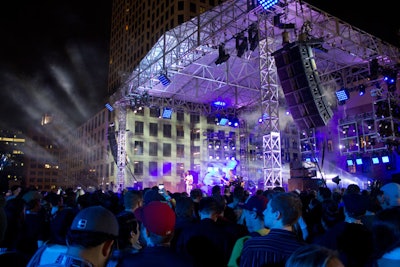
The biggest festivals, conferences, and pop-culture events seem to be getting more popular for attendees and marketers. During a June 2014 panel on young affluent travelers hosted by Travel & Leisure, David Brown from Celebrity Cruises said it is looking to tie more trips to large international events like the World Cup. Another panelist joked he should figure out a way to sail to Austin, Texas, for South by Southwest. That famous festival (pictured) continued its growth this year, drawing more international delegates and activations from unexpected brands like Pennzoil and Cottonelle, while many Silicon Valley tech companies—formerly strong constituents—skipped it. Likewise, the Coachella Valley Music & Arts Festival continued to set gross ticket sales records, while also drawing criticism for being too commercial. And Burning Man, once known as a counterculture hippies-and-techno festival in the desert, generated press about tech moguls setting up elaborate private camps. Do these large events—like Art Basel in Miami Beach, coming in December—risk losing their intended audiences?
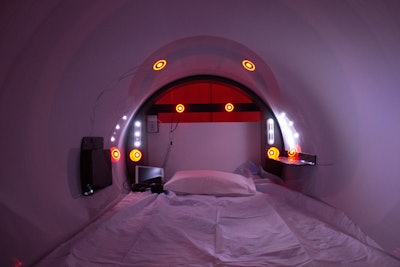
Earlier this year the Centers for Disease Control and Prevention declared insufficient sleep a public health epidemic, and our collective exhaustion is affecting events: Sleep has become a hot topic and a lure for activations, while lack of sleep might be limiting the impact of conferences and meetings. In spring 2014, Arianna Huffington published a book and hosted a conference, both called Thrive, focused on wellness as a part of business success, with sleep as a primary factor. Two different brands included nap pods (pictured) in their installations during South by Southwest in Austin in March. And artists and performers are staging performances and installations where sleep is part of the experience.

Since pop-up shops first appeared a decade ago, they have only become more popular, partially due to trends in real estate, retail, and marketing. Now their spirit is pervading outlets with long-term leases. New York-based Story (pictured) bills itself as “a retail space that has the point of view of a magazine, changes like a gallery, and sells things like a store.” Tristan Pollock, co-founder of the temporary retail space listing site Storefront—which helps brands find venues for pop-ups—says more than 100 hotels use the site to bring cool, local brands to their lobbies.
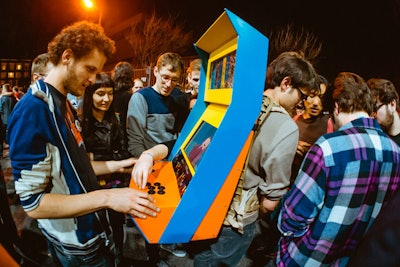
The burgeoning world of professional video game competitions, known as e-sports, now sells out large arenas, lures at-home audiences that rival traditional sports events, and draws sponsors like Coca-Cola, American Express, and T-Mobile. Last week, Amazon pledged $1.1 billion to buy Twitch, the most popular website for watching people play video games and one of the 15 most-trafficked websites in the world. Meanwhile, as the Internet has made gaming a spectator sport, some game designers are looking to bring back old-fashioned gamer nights with multiplayer games that don’t work online. Events like the Wild Rumpus (pictured) are sprouting up around these games, too.
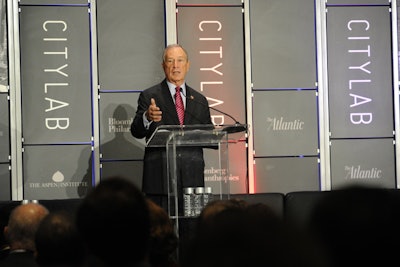
Interest in modernizing and revitalizing cities is generating conference content, sparking new municipal initiatives, and influencing charitable tie-ins. In October 2013, The Atlantic, the Aspen Institute, and Bloomberg Philanthropies launched the conference CityLab: Urban Solutions to Global Challenges in New York. The award-winning event moves to Los Angeles September 28 to 30. Life Is Beautiful, the music, art, and food festival that debuted in October 2013 in downtown Las Vegas, is part of Zappos C.E.O. Tony Hsieh’s work to revitalize the city’s former urban core. It returns October 24 to 26. And the Great Chicago Fire Festival, “created to unite the neighborhoods of Chicago and show the world its strength,” is a city-sponsored public spectacle set to debut October 4.

